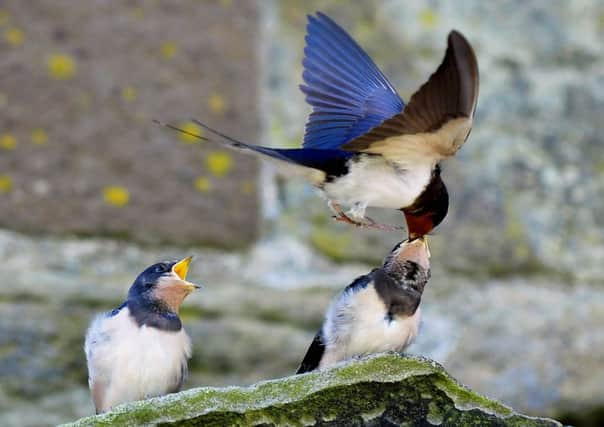Tweeting trails of migrating bird life


Since setting up an aptly named Twitter account @Swallowsighting for people to report the UK arrival of swallows from Africa, he has had thousands of responses. The British Trust for Ornithology (BTO), the country’s main bird study organisation, also uses Twitter to monitor the spread of summer migrants like the osprey and cuckoo via @_BTO.
Twitter enables people to send and read short 140-character text messages called tweets. Since it began in 2006, Twitter has become so powerful that commentators claim it was the decisive factor in the election of US president Barack Obama. Last week the Turkish government blocked the service and threatened to close it down for good after users published damaging allegations of corruption regarding the prime minister’s inner circle. All of which is a world away from the English countryside in spring and the annual return of birds from their winter quarters in Africa.
Advertisement
Hide AdAdvertisement
Hide Ad“I’ve always been fascinated by bird migration,” says Jamie, who lives in a lodge on the Wentworth Woodhouse estate near Rotherham. “I love swallows in particular because they nest in my outhouse. In late March and early April I’m always full of anticipation, waiting for a male swallow to return to the nesting site. A few years ago I wondered if there were many people like me, and when I set up the Twitter account about 1,000 people followed me almost overnight.”
Thanks to Jamie’s Twitter service we know that the first arrivals were seen making landfall at Pool Harbour in Dorset on March 3. By March 5 a bird was sighted on Merseyside and there were reports from Derbyshire and Nottinghamshire later in the month. The first swallow reported in Yorkshire this year was sighted on March 22 at Nosterfield Local Nature Reserve, near West Tanfield in North Yorkshire, soon followed by others at Elsecar Reservoir, near Rotherham and Roundhay Park, Leeds.
Reports of new arrivals in Sussex as early as January and February had to be discounted because it appears that two or three birds decided to stay on for the whole winter because of the unseasonably mild weather.
Jamie believes the first week of April will see the biggest influx.
Advertisement
Hide AdAdvertisement
Hide Ad“I think the early birds are those, like the Sussex swallows, that don’t go all the way to South Africa for the winter but remain in Southern Europe or North Africa. When the birds from South Africa arrive that’s when the deluge really starts, and retweeting the reported sightings that come into me becomes almost a full-time job. Last year I had over 1,000 in one day.”
Jamie has had swallows nesting in his outhouse for almost 20 years, producing two broods between April and September. He cut into the top of the timber door a point of access known as a bob hole to allow the birds to fly in and out when the door is locked.
“It was always a concern to me that someone would accidentally close the door. When the birds first arrive in April I leave it slightly ajar, but once the nest is established it’s closed and padlocked so that my lawnmower is safe, but also to keep out cats and magpies.”
This week, the BTO’s Twitter account gave followers the chance to track a cuckoo via satellite tagging as it headed through West Africa from Cameroon to the Gulf of Guinea and Togo, a few weeks before its expected arrival here.
Remarkably, followers were able to stay tuned as one of the tagged ospreys was tracked across Africa for over 800 miles in three days before finally landing in southern Spain.